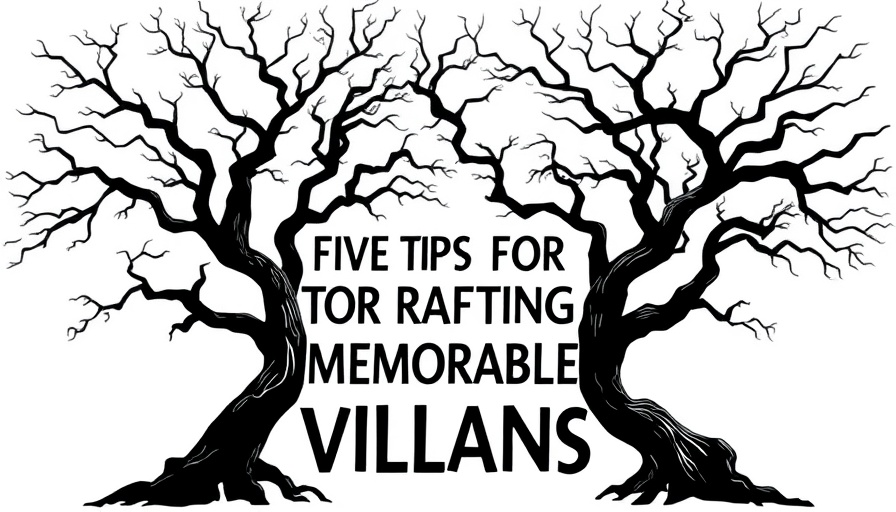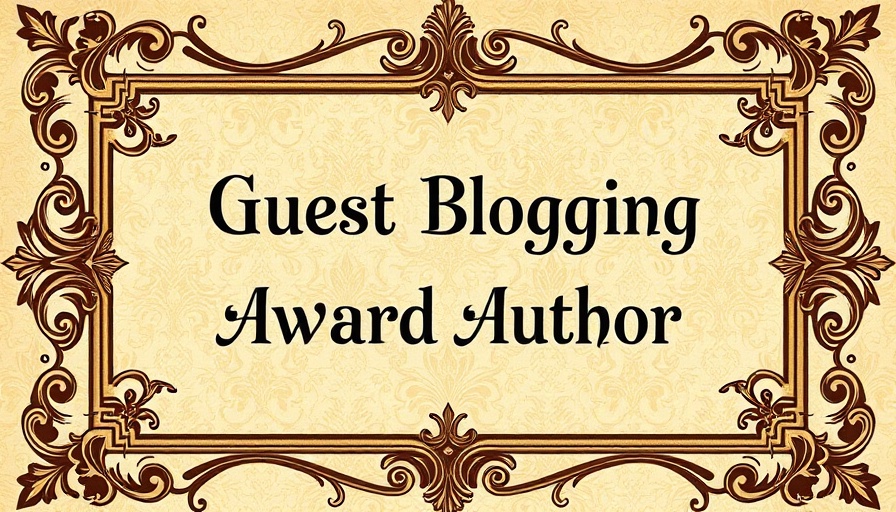
The Art of Creating a Complex Antagonist
In any compelling story, the role of the villain goes beyond a mere antagonist; they can bring depth and intrigue to the narrative. For writers, crafting memorable villains is akin to painting an intricate masterpiece—each brush stroke reveals more about the character’s motivations and inner turmoil. Understanding how to weave a villain's backstory, conscience, and fundamental beliefs into your narrative can elevate your story immensely.
Understanding the Villain's Backstory
At the heart of a well-designed villain lies a layered backstory filled with conflict and complexity. Creating a history that often involves trauma, loss, or pivotal moments allows readers to understand why a character becomes the way they are. This enables writers to shift readers' perspectives, as they come to appreciate the villain as a product of their environment, rather than simply a caricature of evil.
For instance, consider the psychological motivations behind famous literary villains. Characters like Lady Macbeth or Javert from Les Misérables illustrate how past experiences can lead to a skewed perspective on morality. By showcasing their vulnerabilities and the wounds that drive them, writers can cultivate a sense of empathy or at the very least, a nuanced understanding of their choices.
Rationalizing Evil: The Villain's Justification
A powerful element of crafting memorable villains is their self-justification. We often witness real-world examples where figures of authority rationalize actions that society abhors. In literature, this creates a dynamic where the villain sees themselves as a hero, challenging readers to question their own moral judgments. As one villain in a short story may act out of reprisal, another may perceive their questionable actions as necessary for the 'greater good.'
Creating this duality not only complicates their portrayal but also prompts readers to wrestle with complex ethical dilemmas—encouraging a richer narrative exploration. For writers, allowing villains such layers can prompt engaging discussions among readers about right and wrong.
Aligning Characters with Villainy
In storytelling, it's often fascinating to see how some characters align with the villain's motives, thereby creating factions within the narrative. It mimics real-world alliances where people rally behind a leader or cause, often obscuring the antagonist’s sinister actions through a veil of charisma or compelling rhetoric. Historical figures like Hitler and their supporters reveal how easy it is to surrender one’s morals to align with a dominant ideology.
This observation can translate into fiction. Imagine a charismatic yet morally bankrupt leader who gathers followers based on shared grievances or fears. Their charm can cloak their malfeasance, enthralling characters (and readers) to further complicate allegiances in your narrative.
The Impact of a Villain on the Protagonist
A well-drawn antagonist does more than just create conflict; they force the protagonist to confront their limitations, fears, and ultimately, their growth. By presenting obstacles that resonate on personal levels—whether emotional, physical, or moral—villains can push protagonists to evolve and deepen their arcs.
Think of novels like The Great Gatsby, where Tom Buchanan is not merely an obstacle but a reflection of Gatsby’s own desires and failures. This interplay can make both characters more compelling and allow readers to explore themes of ambition, regret, and societal critique.
Takeaway: Writing with Empathy
Creating memorable villains involves understanding and portraying them with enough depth to make the reader question their own beliefs. Just like protagonists hold secrets and complexities, so too should the antagonists. By humanizing villains through a balanced combination of backstory, rationalization, and alignment with other characters, writers can craft stories that are not only thrilling but reflective of the complex nature of humanity itself.
Remember, the most unforgettable villains are those whose stories intertwine skillfully with the heroes, resulting in a compelling dance of morality that stays with readers long after they have closed the book. Dive into your villains’ psyches and watch as the richness of your narrative unfolds.
 Add Row
Add Row  Add
Add 




 Add Row
Add Row  Add
Add 

Write A Comment